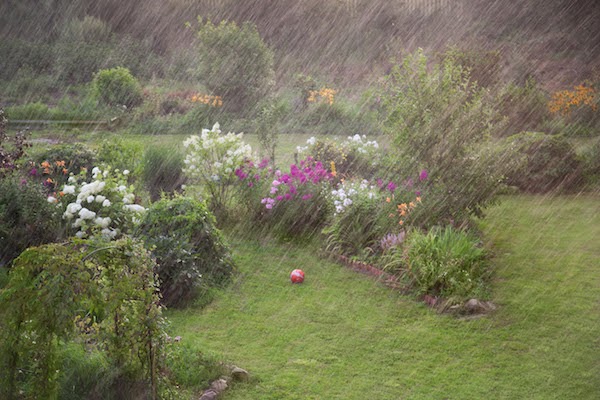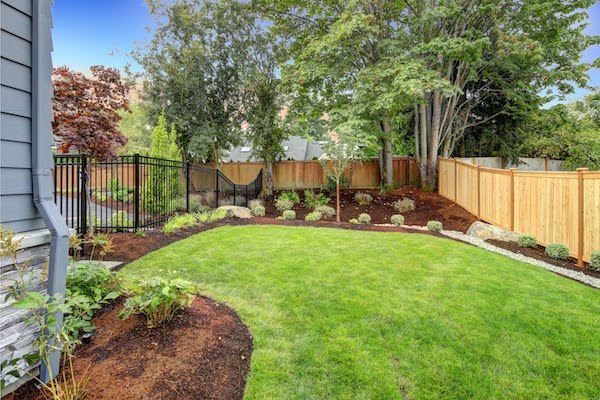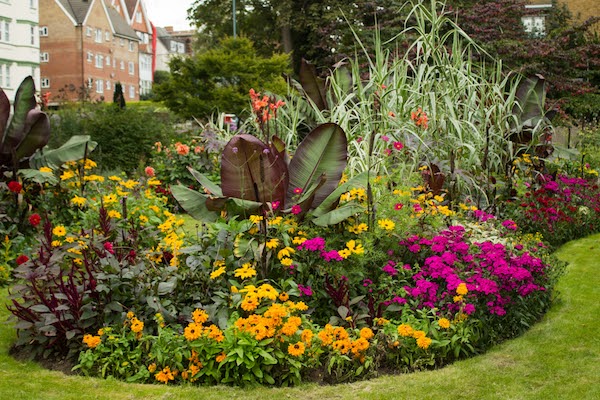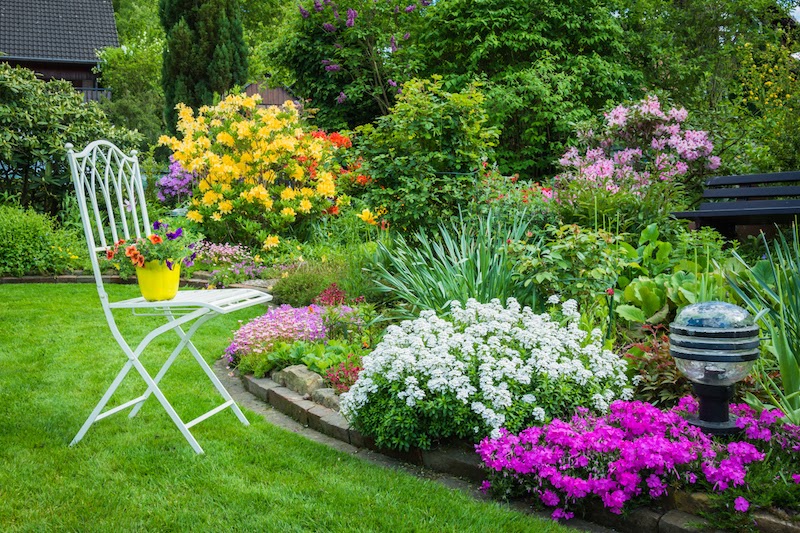A rain garden may not sound like the most attractive feature based on its name, but what’s in a name? A garden by any other name will smell as sweet and provide your home with natural beauty and curb appeal. Rain gardens provide endless benefits to your home and landscape and should not be discounted based on their name alone. Read on to learn more about rain gardens and why adding one to your home is only beneficial.
What Is a Rain Garden and How Does It Work?

A rain garden is a garden that uses the natural landscape to collect rainwater to water your plants. Most commonly found in rain gardens are deep-rooted native shrubs, perennials and flowers that are planted in a small depression in the ground, usually formed by a natural slope in the land. The slope helps to collect rainwater that runs off of roofs, downspouts, driveways and sidewalks. The water collects for a short period of time in the rain garden which waters your plants more deeply.
A rain garden can be created or made in an already low spot in your landscape. Directing downspouts into this garden will allow your plants to absorb and filter water away from other areas of your yard. When deciding which plants to add, choosing native ones, which are already accustomed to both high moisture and drought, are your best bet.
Benefits of a Rain Garden
Rainwater is pure before it touches the ground, but once it flows through grass with fertilizers, it becomes mixed with pollutants and can be harmful. Rain gardens prevent pollution from soaking in this impure run-off water, instead of letting it flow into streams and rivers. Rain gardens can effectively remove up to 90% of nutrients and chemicals and about 80% of sediments from the rainwater runoff. Rain gardens allow for about 30% more water to soak into the ground.
Additionally, these gardens can protect against floods and water damage in your home by directing heavy rainfall into a designated area. Who knew that having this kind of garden could be the thing that stops your basement from flooding next spring?
As a bonus benefit, depending on the plants you choose, rain gardens attract butterflies, birds and other wildlife!
Location, Size & Shape

It’s all about location when it comes to designing your rain garden. You want to ensure you’re placing it in the best spot so that you can get all of the benefits of a rain garden. A few things to take into consideration are how deep, how wide, what shape, and the location in your yard.
Location
Ideally, you want to place your rain garden on a natural slope in your landscape so that water can easily flow into it. If you do not have a natural slope, a lawn care professional can dig down to create one for you.
Make sure that your rain garden is placed at least 10 feet away from your home. This is especially important if you are creating a rain garden for your gutters to drain into. Placing a rain garden closer to your home can result in flooding if there is particularly heavy rainfall. Be sure to take this into consideration when scouting out the perfect location.
Size
The size of your garden doesn’t matter as much, but for better drainage, larger is better. Try having a 150 square foot space to receive the full benefits. Inquire with your lawn care professional about what is underneath your lawn and if digging a hole will interfere with any utility lines. A common misperception is that these gardens need to be deep. In reality, a 5-inch deep hole, with a flat bottom and gently sloping sides, will suffice.
Shape
Staying in the rounded shapes category, including ovals, circles, or teardrops, are not only best for drainage but are aesthetically pleasing as well.
Which Plants Thrive in a Rain Garden?

Sorry to all the annual-lovers, but this garden requires perennials only. Not to worry, there are endless possibilities in this category. Like many big projects, try to start from the middle and work your way out. Plants sectioned to the middle of this garden will experience the most moisture, so make sure they thrive in these conditions. You can’t go wrong with Coneflowers, Black-Eyed Susan, Hardy Hibiscus, as well as hardy grasses like fountain grasses or corkscrew. For the exterior, Coral Bells, Catmint, or Butterfly Weed are great choices as they don’t mind some drought.
Along with perennials, trees and shrubs can also be a great feature and a focal point for this space. Medium-sized trees like a Redbud or River Birch will work well in larger landscapes and will also increase the water absorption ability in your garden. For a smaller section, Oakleaf Hydrangea or Ninebark shrubs are a little smaller but still add great visual interest.
Starting a rain garden can be a bit overwhelming and is a little high maintenance during the first year. Watering deeply but rarely will encourage healthy and strong roots and allow these plants to learn to live on their own. Ensure you weed often, or inquire with a garden maintenance pro about recurring assistance.
